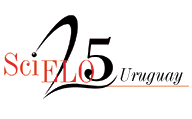Art, aesthetics and robots
a philosophy of interaction
DOI:
https://doi.org/10.25185/10.7Keywords:
Interaction, Interactive art, Robotic art, Aesthetics, FunctionAbstract
The concept of interaction is key in the contemporary development of social robotics. We do discuss, however, the convenience of a definition that prioritizes the robot’s programming successes and threatens to undermine its integration as an elemental dimension of human nature. Based on a definition from analytical philosophy, in which the definitely human horizon of the concept of interaction is not devalued, we carry out a «search in the field of robotic art» as a harmless territory for experimentation in which aesthetic regulations are applied. independently, therefore, of other interests related to utility or industrial application. Special attention is paid to those cases oriented to machine / human interaction, and we finally apply a hierarchy of levels of interaction, which is followed by a series of provisional conclusions.
Downloads
References
Benthall, Jonathan. Science and Technology in Art Today. New York: Praeger Publishers, 1972.
Brooks, Rodney. Cuerpos y máquinas. De los robots humanos a los hombres robots. Barcelona: Ediciones B, 2003.
Burnham, Jack. “Art and Technology: The Panacea that Failed”. En The Myths of Information: Technology and Postindustrial Culture, editado por Kathleen Woodward, 200-215. Madison: Coda Press, 1980.
Burnham, Jack. Beyond Modern Sculpture. The Effects of Science and Technology on the Sculpture of this Century. New York: George Braziller, 1968.
Dautenhahn, Kerstin. “Embodiment and Interaction in Socially Intelligente Life-Like Agents”. En Computation for Metaphors, Analogy, and Agentes, editado por Chrystopher L. Nehaniv, 102-141. Berlin: Springer-Verlag, 1999. DOI: https://doi.org/10.1007/3-540-48834-0_7
Giannetti, Claudia. “Arte humano/máquina. Virtualización, interactividad y control”. En Arte, cuerpo, tecnología. Editado por Domingo Hernández Sánchez, 211-221. Salamanca: Ediciones Universidad de Salamanca, 2003.
Giannetti, Claudia. Estética digital. Sintopía del arte, la ciencia y la tecnología. Barcelona: Associació de Cultura Contemporània L’Angelot, 2002.
Hegel, Georg W. F. Lecciones sobre la Estética. Traducido por Alfredo Brotons Muñoz. Madrid: Akal, 2007.
Inhatowicz, Edward. Cybernetic Art: a personal statement. Londres: autopublicación, 1986.
Jones, Caroline A. “Cybercultural Servomechanisms: Modeling Feedback around 1968”. En Art in the Age of the Internet: 1989 to today, editado por Eva Respini, 42-49. Boston: ICA, 2018.
Julia, Luc. L’intelligence artificielle n’existe pas. Paris: Éditions First, 2019.
Kand, Takayuki & Ishiguro, Hiroshi. Human-Robot Interaction in Social Robotics. Boca Raton: CRC Press, 2013.
Klütsch, Christoph. “The summer 1968 in London and Zagreb: starting or end point for computer art?”. En C&C ‘05: Proceedings of the 5th conference on Creativity & Cognition, 109-117. New York: Association for Computing Machinery, 2005.
Krauss, Rosalind E. Passages in Modern Sculpture. New York: The Viking Press, 1977.
Krueger, Myron W. “Responsive Environments”. Proceedings of AFIPTS National Computer Conference 46 (1977): 423-433.
Krueger, Myron W. “VIDEOPLACE: A Report from the ARTIFICIAL REALITY LAboratory”. Leonardo 18, nº 3 (1985): 145-151.
Krueger, Myron W. Artificial Reality, Reading: Addison-Wesley, 1983.
Kwastek, Katja. “The Invention of Interactive Art”. En Artists as Inventors, Inventors as Artists, editado por Dieter Daniels y Barbara U. Schmidt, 182-193. Berlin: Hatje Cantz, 2013.
Kwastek, Katja. Aesthetics of Interaction in Digital Art. Cambridge: The MIT Press, 2013.
Magrini, Boris. Confronting the machine. An enquiry into the subversive drives of computer-generated art. Berlin: De Gruyter, 2017.
Marcos, Alfredo. “Información e inteligencia artificial”. Ápeiron. Estudios de Filosofía 12 (2020): 73-82.
Marcos, Alfredo. “La inteligencia artificial y el efecto Toy Story”. Proyecto SCIO Red de investigaciones filosóficas José Sanmartín Esplugues. Acceso el 20 de abril, 2021. https://proyectoscio.ucv.es/actualidad/la-inteligencia-artificial-y-el-efecto-toy-story-por-a-marcos/
Metzger, Gustav. “Automata in History”. Studio International 177, nº 907 (1969): 107-109.
Michie, Donald y Rory Joohnston. The creative computer. Machine intelligence and human knowledge. Middlesex: Penguin Books, 1984.
Parsons, Glenn, y Allen Carlson. Functional Beauty. Oxford: Oxford University Press, 2008.
Penny, Simon. “Robotics and Art, Computationalism and Embodiment”. En Robots and Art. Exploring and Unlikely Symbiosis, editado por Damith Herath, Christian Kroos y Stelarc, 47-65. Singapore: Springer, 2016. DOI: https://doi.org/10.1007/978-981-10-0321-9_4
Pradier, Adrián. “Robótica, estética y antropología: problematizando el diseño antropomórfico”. En Hombre y lógos. Antropología y comunicación, coordinado por José Manuel Chillón, Ángel Martínez y Pablo Frontel, 305-319. Valladolid: Fragua, 2019.
Reichardt, Jasia, ed. Cybernetic Serendipity: the computer and the arts. A Studio International special issue. London: Studio International, 1968.
Reichardt, Jasia, ed. Cybernetics, Art and Ideas. London: Studio Vista, 1971.
Reichardt, Jasia. “Art at large”. New Scientist 54, nº 794 (1972): 292.
Reichardt, Jasia. Robots: Fact, Fiction and Prediction. London: Penguin Books, 1978.
Rhee, Jennifer. The Robotic Imaginary. The Human and the Price of Dehumanized Labor. Minneapolis: University of Minnesota Press, 2018.
Smuts, Aaron. “What is Interactivity?”, The Journal of Aesthetic Education 43, nº 4 (2009): 53-73.
Stern, Nathaniel. Interactive Art and Embodiment. The Implicit Body as Performance. Canterbury: Gylphi, 2013.
Usselmann, Rainer. “The dilemma of Media Art: Cybernetic Serendipity at the ICA London”. Leonardo 36, nº 5 (2003): 389-396.
Venturelli, Nicolás A. “Historia y epistemología de la cibernética temprana: el caso del homeostato”. Revista Argentina de Ciencias del Comportamiento 8, nº 2 (2016): 124-133.
Walter, William Grey. “An Imitation of Life”. Scientific American 182, nº 5 (1950): 42-45.
Wilson, Stephen. Information Arts. Intersections of Art, Science, and Technology. Cambridge: The MIT Press, 2002.
Zivanovic, Aleksander, y Stephen Boyd Davis. “Elegant motion: The Senster and other cybernetic sculptures by Edward Ihnatowicz”, Kybernetes 40, nº 1/2 (2011): 47-62.
Zivanovic, Alexander. “SAM, The Senster and The Bandit: Early Cybernetic Sculptures by Edward Ihnatowicz”. En Proceedings of the Symposium of the Robotics, Mechatronics and Animatronics in the Creative and Entertainment Industries and Arts. Hatfield: Society for the Study of Artificial Intelligence and the Sitmulation of Behaviour, 2005.
Published
How to Cite
Issue
Section
License
Copyright (c) 2021 Adrián Pradier

This work is licensed under a Creative Commons Attribution 4.0 International License.



























 This work is under a
This work is under a 